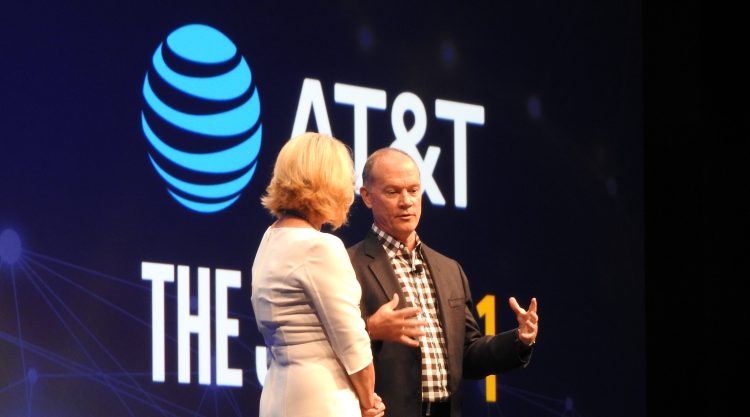Some observers flinched when Verizon said it doesn’t care about the pending merger of T-Mobile and Sprint, but AT&T CEO John Donovan offered a more nuanced and optimistic explanation of the same sentiment: 5G has created opportunities for all of the industry’s top players to compete in different ways that are positive for consumers. Donovan shared his views on the merger and 5G at the fifth annual MoffettNathanson Media & Communications summit, offering some details on AT&T’s 5G network strategy in the process.
On the T-Mobile/Sprint merger, Donovan said that AT&T “certainly won’t contest it,” noting that Verizon, AT&T, and the combined T-Mobile/Sprint have each “embarked on a slightly different version” of evolving their businesses for the 5G era. Whereas one carrier might focus on selling 5G technology and hardware, another could focus on bundling multiple types of wireless services, while a third can concentrate on merging content together as a consumer offering. “Each of us has embarked on a path that’s different enough that there’s nothing [a rival can do] that’s going to hit our sweet spot,” explained Donovan. Nothing will be “as harmful as … our inability to execute a thing that we’ve already taken on.”
Donovan says so far he has felt lucky that AT&T’s 5G work has had “the fewest surprises” of any network transition he’s seen, with no downsides in speed or latency, despite the rapid pace of development. In fact, he’s been amazed that enterprise customers are calling the company, actively anxious to see an ultra-low latency “realtime network” deployed. To that end, the carrier is still on track for its previously announced late 2018 deployment of mobile 5G with portable hotspot pucks, followed by handsets in 2019.
AT&T’s 5G plans will apparently rely on new millimeter wave technology for large areas such as parks and factories, falling back on lower-frequency radio spectrum to give 5G a “ubiquitous footprint.” Referring to the minimum 1-Gigabit per second speed expected of 5G as “Gig,” he teased the newer technology’s ability to transform how people see public spaces, noting that “millimeter wave is going to create Gig zones with hyper-low latency,” such as public parks that will evolve into wireless-enabled virtual reality parks.
June 5th: The AI Audit in NYC
Join us next week in NYC to engage with top executive leaders, delving into strategies for auditing AI models to ensure fairness, optimal performance, and ethical compliance across diverse organizations. Secure your attendance for this exclusive invite-only event.
Donovan also said that AT&T’s decision not to start with fixed 5G broadband service was based on the observation that it doesn’t offer much to customers. “Fixed is in some respects a challenging use case,” he opined. “You can do most of that today without 5G … What are you gaining economically by having a wireless drop between a node and a building when you’re [already] wiring the inside of the building?”
Still, AT&T is trying to improve its wireless network speeds by making better use of its wired line infrastructure, which will enable it to compete with wired broadband service. “What we’re trying to do is get use cases over the line to get more of the footprint to a Gig as fast as possible,” Donovan said. “Our view is, in order to be competitive we have to get through this ‘100 Meg to 1 Gig’ envelope as fast as possible, because at a Gig, our industry gets back to parity [with wirelines].”
He also said that the power of a 5G network will become evident in some intriguing ways. “You can get accuracy on location down to the millimeter,” he noted, a radical improvement upon the multiple feet or meters of present GPS, “so you start to think of things you can do on farming, and road striping.”

